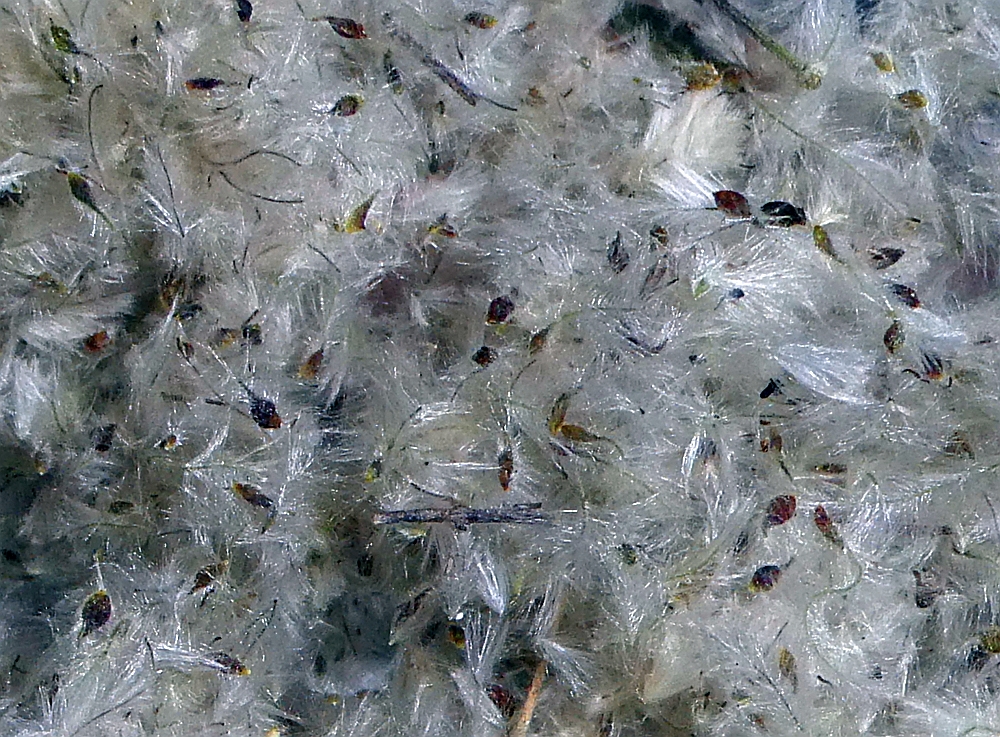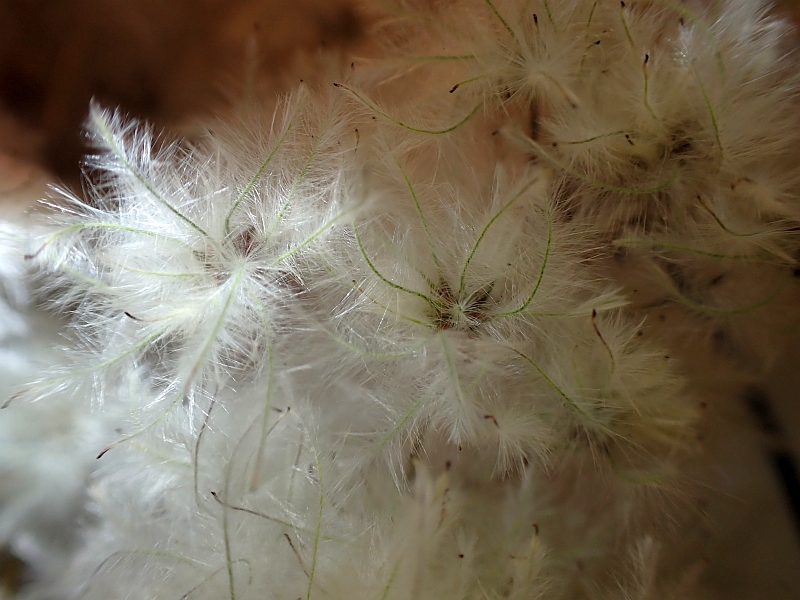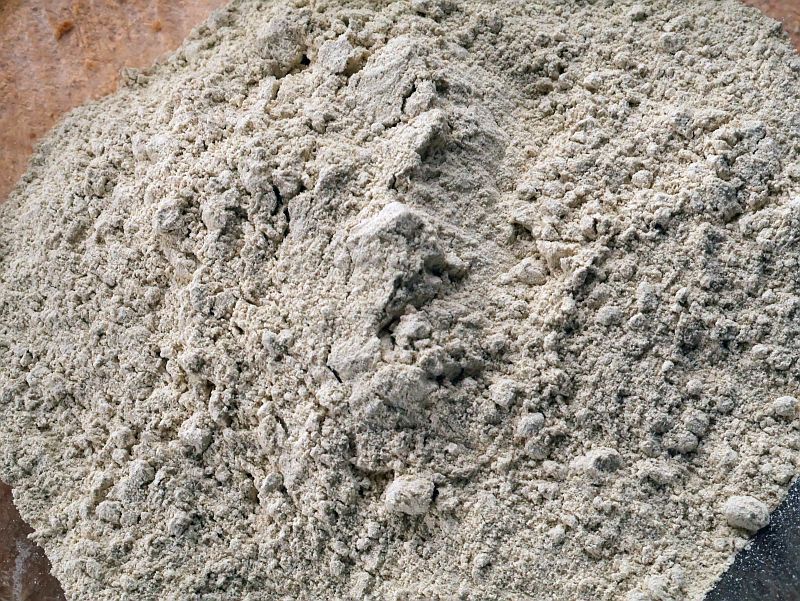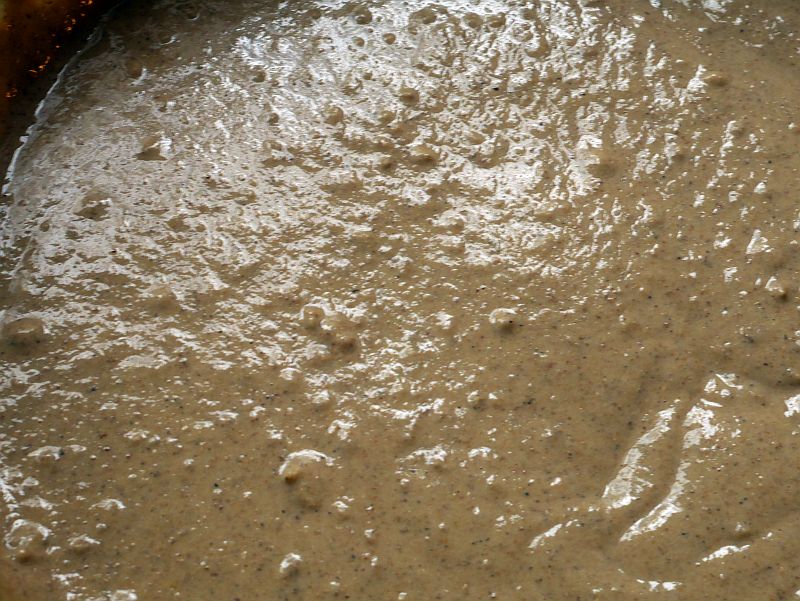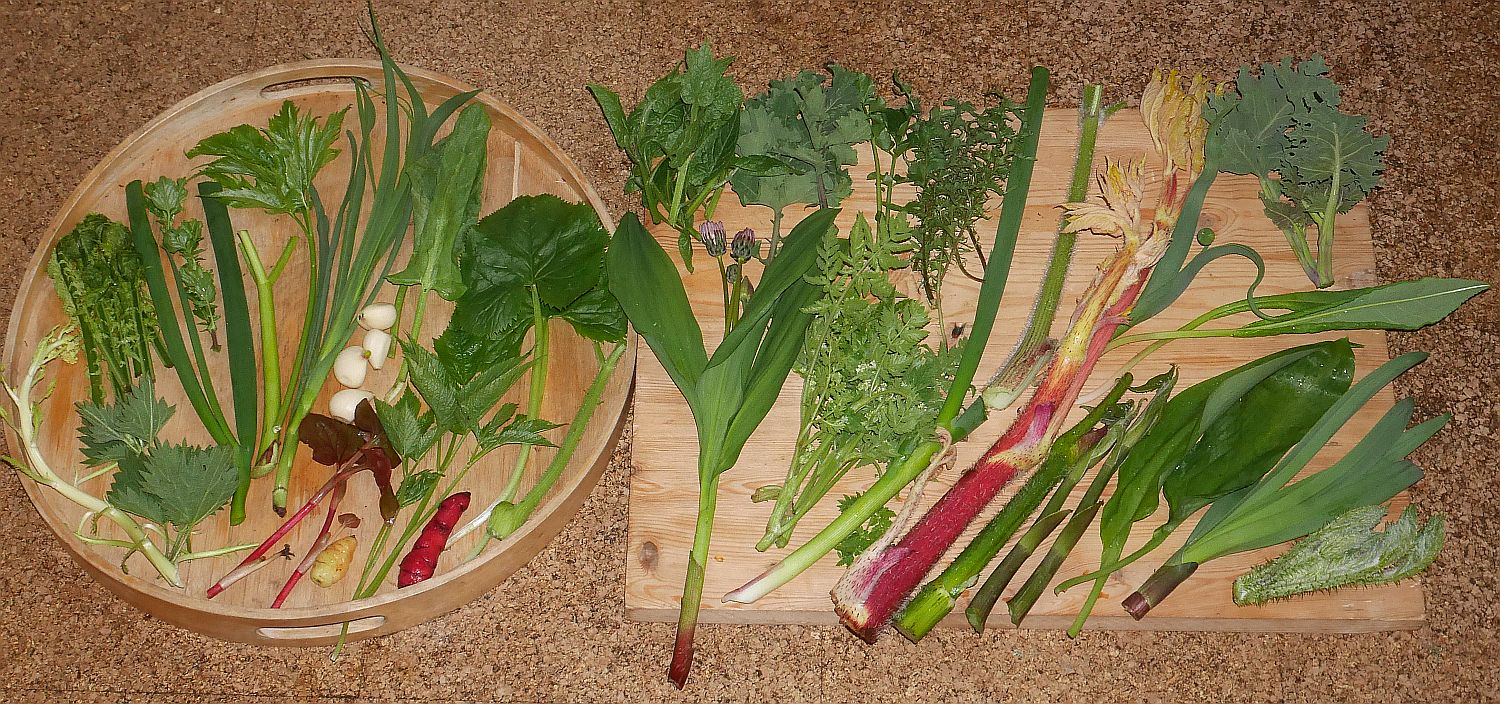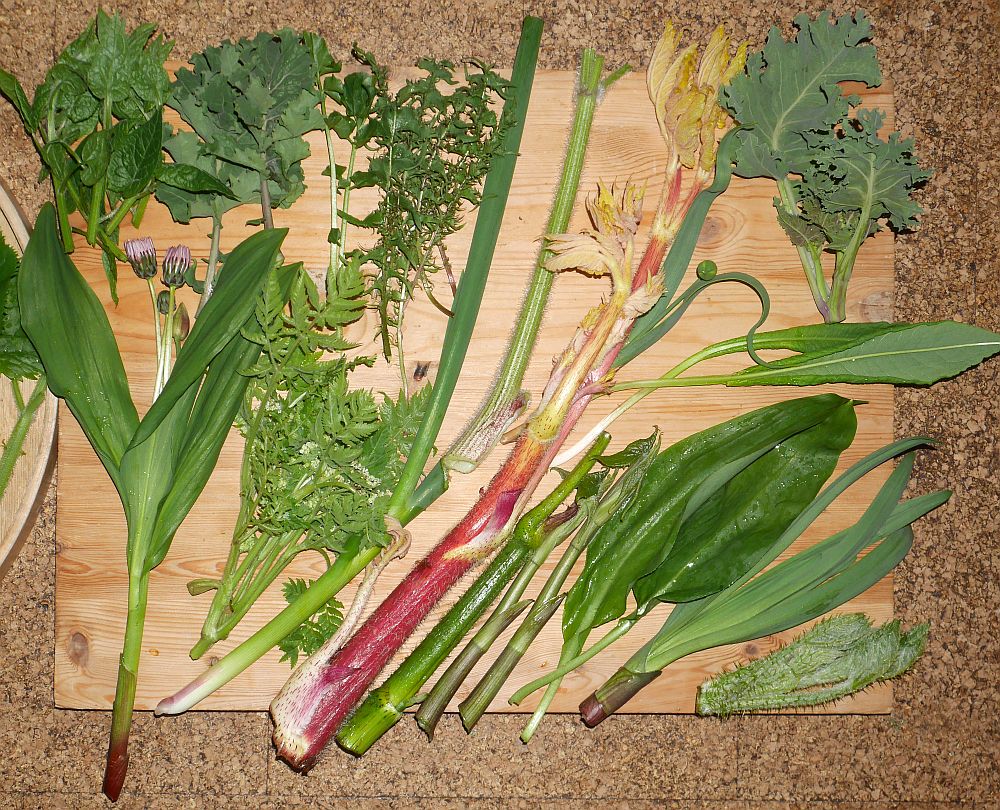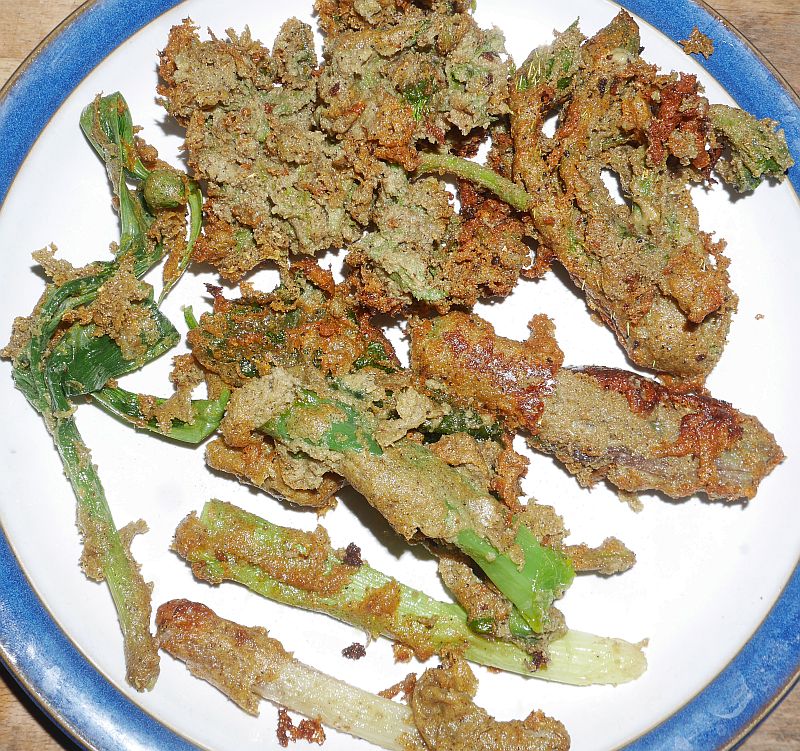Tag Archives: Perennial vegetables
The nutrition of perennial vegetables
Celebration 40 genera salad
40 years ago this month I came to Norway to find a place for us to live as I was to start work at Institutt for kontinentalsokkelundersøkelser (IKU; Continental Shelf Institute) in Trondheim in October 1981. The flat I found was here in Malvik kommune (Torp).
To celebrate 40 years in Malvik I made a salad with 40 different genera. The names of the genera are below the pictures!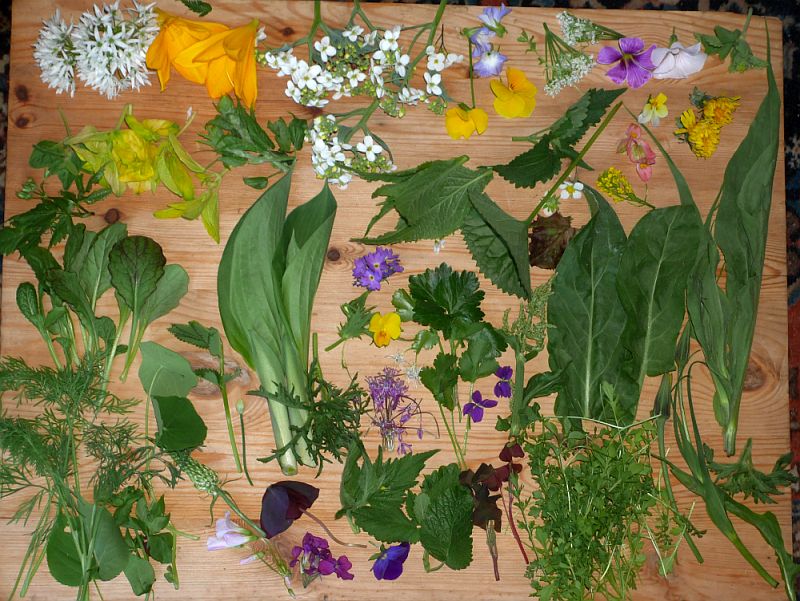
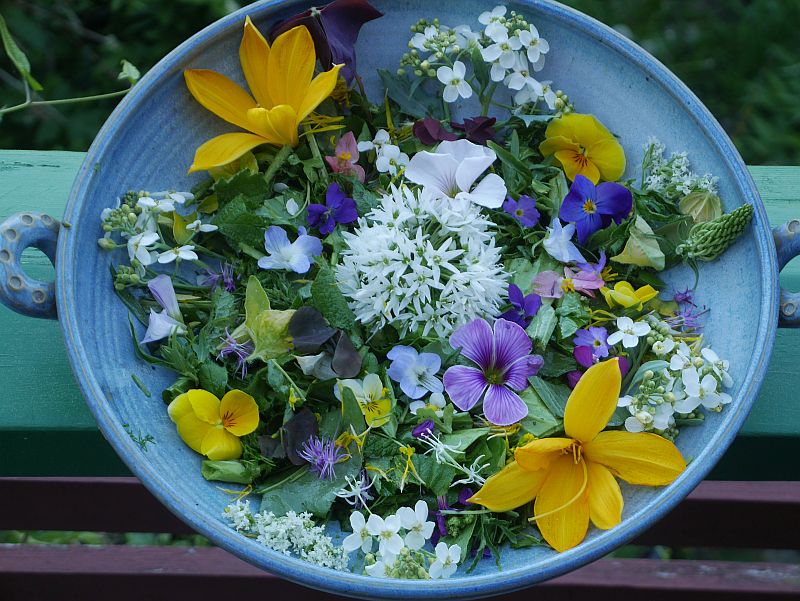

The 40 genera:
- Begonia
- Anethum
- Salvia
- Lactuca
- Chrysanthemum
- Raphanus
- Apium
- Coriandrum
- Oxalis
- Tilia
- Tropaeolum
- Hablitzia
- Hosta
- Stellaria
- Alliaria
- Phyteuma
- Melissa
- Malva
- Lavatera
- Allium
- Lunaria
- Arabis
- Alchemilla
- Scorzonera
- Tragopogon
- Sanguisorba
- Campanula
- Primula
- Taraxacum
- Rumex
- Viola
- Lepidium
- Claytonia
- Ligularia
- Fragaria
- Osmorhiza
- Barbarea
- Hemerocallis
- Crambe
- Myrrhis
Broad bean (fava) pakora
A little over a year ago we made pakora (Indian fried vegetables) with 65 perennial vegetables to celebrate my 65th birthday (see https://www.edimentals.com/blog/?p=25405)
I made the following comment: “Just wish I’d had broad / fava bean (bondebønne) flour available for the pakoras rather than gram flour (chick peas)…next time I hope :)”
Well, my wish came true and a Swedish guy kindly sent me a packet (sorry, I forget your name, but I think he produces this great slow food product; see http://svensk-fava.se).
(I don’t have the equipment to grind my own broad beans). So here you are. The album below shows the flour, the pakora mixture, the 30 veggies used (list at the bottom) and the final delicious product, a dream come true, something I’ve wanted to make and talked about for years!!
The veggies:
Ostrich fern / strutseving (Matteuccia struthiopteris)
Horseradish / pepperrot (Armoracia rusticana) – blanched
Stinging nettle / brennesle (Urtica dioica)
Topset onion / luftløk (Allium x proliferum)
Common wintercress / vinterkarse (Barbarea vulgaris)
Giant ulleung celery / kjempe ulleung selleri (Dystaenia takesimana)
Allium hymennorhizum
Garlic / hvitløk (Allium sativum)
Himalayan water creeper (Houttuynia cordata)
Oca (Oxalis tuberosa) yellow and red varieties
Ground elder / skvallerkål (Aegopodium podograria)
Patience dock / hagesyre (Rumex patientia)
Gomchwi (Ligularia fischeri)
Common sorrel / engsyre (Rumex acetosa)
Pink-flowered dandelion / roseløvetann (Taraxacum pseudoroseum)
Victory onion / seiersløk (Allium victorialis)
Sweet cicely / spansk kjørvel (Myrrhis odorata)
Welsh onion / pipeløk (Allium fistulosum)
Hogweed / bjørnekjeks (Heracleum spp.)
Parasenecio hastatus
Udo (Aralia cordata) – blanched
Douglas’ onion / Douglas-løk (Allium douglasii)
Bistort / ormerot (Polygonum bistorta)
Ramsons / ramsløk (Allium ursinum)
Pacific onion / Stillehavsløk (Allium validum)
Devil’s club (Oplopanax horridus)
Sea kale / strandkål
Caucasian spinach / stjernemelde (Hablitzia tamnoides)
Great waterleaf (Hydrophyllum appendiculatum)
Moss-leaved dandelion / mosebladet løvetann (Taraxacum sublaciniosum “Delikatess”)
Extreme Salad Man Videos
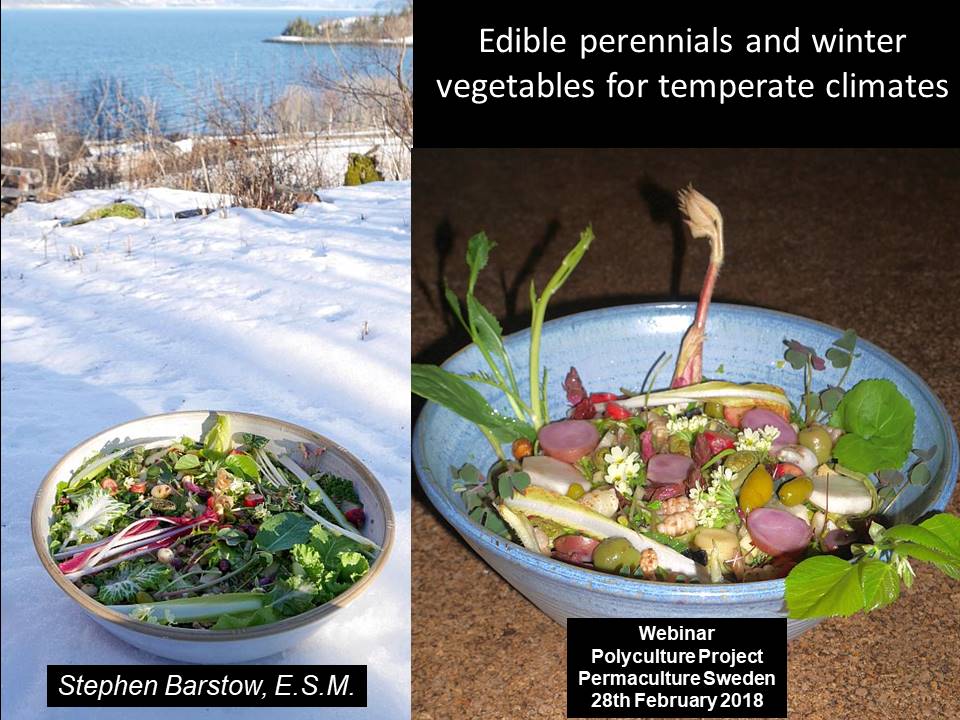
A: Around the World in 80 plants talk in Hurdal, Norway in 3 parts with index to all the plants and topics covered in the film description:
Part 1 https://www.youtube.com/watch?v=QiMSyt7qqGE
Part 2 https://www.youtube.com/watch?v=DIlkhwQ-t48
Part 3 https://www.youtube.com/watch?v=TBxBwHzygpw
B: Stephen’s salad: a six part series following me around the garden collecting plants for a springtime extreme salad in mid-May, also fully indexed by plant names in the film description:
Part 1 https://www.youtube.com/watch?v=mvSB5cb_FXI
Part 2 https://www.youtube.com/watch?v=KUiS0cOhASA
Part 3 https://www.youtube.com/watch?v=BKmEJhSgp7g
Part 4 https://www.youtube.com/watch?v=U5mXiVd5u4A
Part 5 https://www.youtube.com/watch?v=mqYDlKqHEbs
Part 6 https://www.youtube.com/watch?v=-BZGXsUR6hA
C: Webinar on Winter and Hungry Gap Vegetables, March 2018: https://youtu.be/sf1ucsGrU2U
D: Interiew at the Holma Forest Garden in Sweden
https://vimeo.com/172589400
E: Perennial vegetables webinar organised by Swedish Eskilstunas folkhögskola (folk school), Omställningsnätverket (Swedish transition network) and with support of Hela Sverige ska Leva.
https://youtu.be/DO_BdCXqaE0


